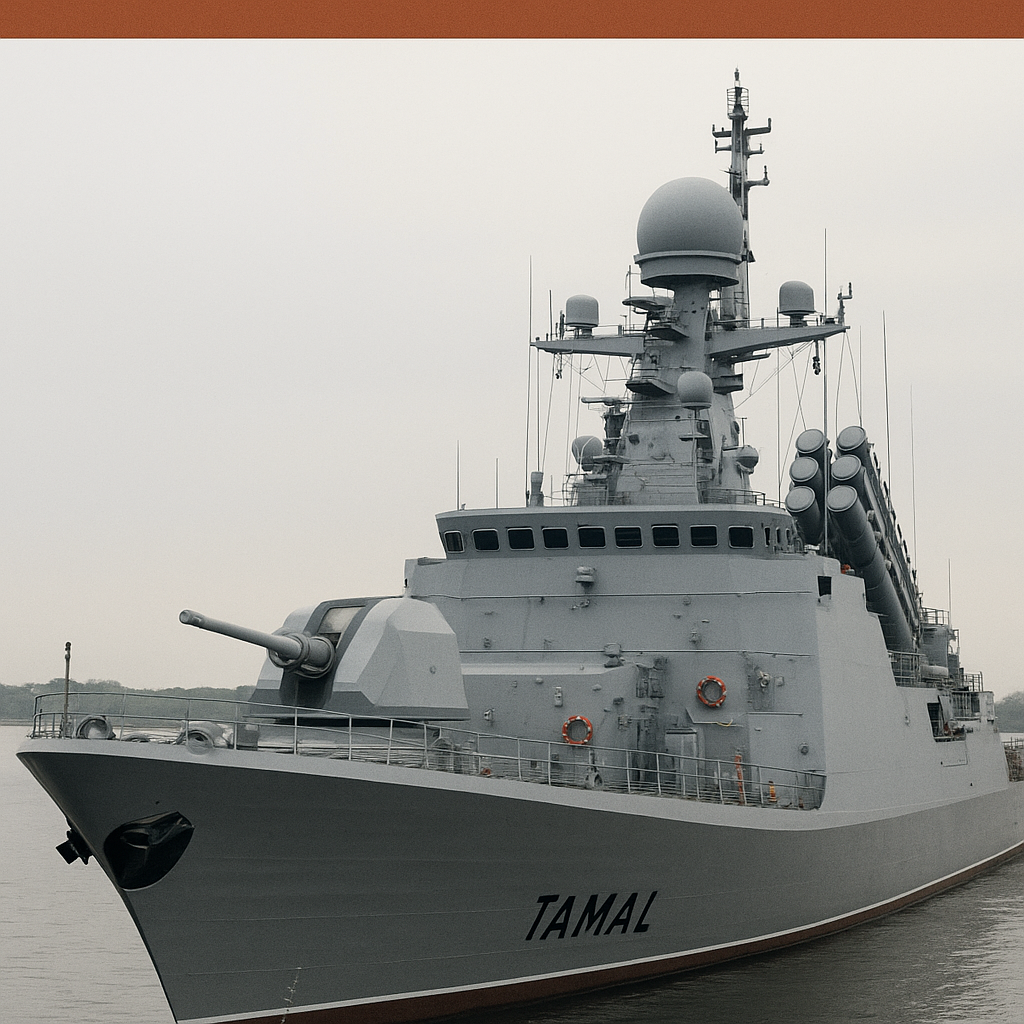On July 1, a significant event will take place at Kaliningrad, a port city in Russia. The Indian Navy is all set to commission its newest warship, the ‘Tamal’.
A Major Naval Boost at a Foreign Port
This warship is a powerful and modern addition to India’s naval strength. Tamal is the eighth ship in a line of frigates that India has received from Russia over the past 20 years. It belongs to the Tushil class, which is an improved version of earlier classes like Talwar and Teg.
The Tamal is built with stealth features, which help it stay hidden from enemy radars. It has been constructed at the Yantar Shipyard in Kaliningrad and is the last such warship to be brought from a foreign country. This is in line with India’s ‘Make in India’ and ‘Aatmanirbhar Bharat’ missions. These missions encourage building more things within the country using Indian technology.
As part of the same defence deal, India is also making two more similar ships at Goa Shipyard with help and design input from Russian engineers. When these ships are completed, the Indian Navy will have ten similar types of frigates, all fitted with the same weapons and systems. This common design makes it easier to train crew members and maintain the ships.
India’s S-400 Air Defense System Stops Missiles and Drones — But Each Intercept Costs $1.75 Million
Tamal: A Stealth Warship with Strong Weapons
The Tamal is not just another warship. It is filled with some of the best and latest technology. One of its main weapons is the BrahMos missile, which can strike both ships and land targets from long distances. The BrahMos missile is known for its speed and power, making it a major asset during any conflict.
Apart from this, Tamal also has several new and improved weapons. It comes with surface-to-air missiles that are launched vertically. These missiles help protect the ship from attacks coming from the air. It also has a stronger 100 MM gun, which is more advanced than the ones on earlier ships. There are also anti-aircraft guns, torpedoes for attacking submarines, and rockets that can be used for sudden underwater attacks.
In terms of technology, the ship has radar and surveillance systems to detect threats early. It also has a modern Electronic Warfare suite, which helps in confusing enemy radars and protecting itself from electronic attacks. The ship is built for speed and power. It can travel faster than 30 knots, which is around 55 kilometers per hour. It can also stay in the sea for long periods without needing to come back to the shore.
Tamal is designed to carry helicopters as well. These helicopters can help in search missions, supply runs, and even attacks. They act as extra eyes and arms of the ship and make the vessel more useful in many situations. The combination of weapons, speed, and endurance means that Tamal can take part in many types of missions, including battle, rescue, and patrol.
Built with Indian Parts and Trained in Harsh Conditions
Even though Tamal was built in Russia, 26% of its parts and systems were made in India. This includes the BrahMos missile and equipment from several Indian companies. Some of the major Indian names involved in the ship include Bharat Electronics, Keltron, Elcome Marine, and Johnson Controls India. These companies have supplied electronics, communication tools, and control systems for the ship.
The construction of Tamal was carefully monitored by a team from India, based in Kaliningrad. This team worked under the Indian Embassy in Moscow and the Warship Overseeing Team. Back home in India, another team at the Naval Headquarters made sure everything went as planned under the supervision of the Ship Production department.
Before being commissioned into the Navy, the ship went through several months of sea trials. These tests were carried out in freezing winter waters around St. Petersburg and Kaliningrad. The aim was to check all the weapons, engines, radar systems, and safety features. Tamal passed all these tests successfully.
The ship’s crew consists of more than 250 sailors. These men and women were trained in both classrooms and out at sea. They had to work in very cold and difficult conditions to get used to the new ship. Their training included learning how to use all the advanced systems and how to keep the ship running smoothly.
Tamal is also equipped with the latest tools to help it stay connected and make decisions quickly. These include satellite-based communication systems, navigation aids, and high-tech data links. These systems help the ship become part of a larger fleet and operate in a well-coordinated manner during missions.
